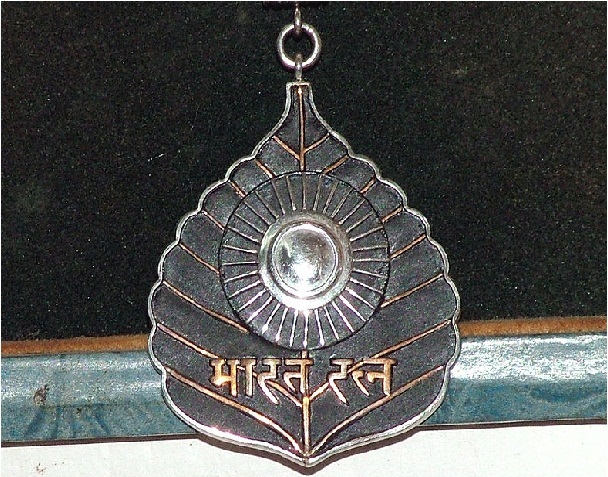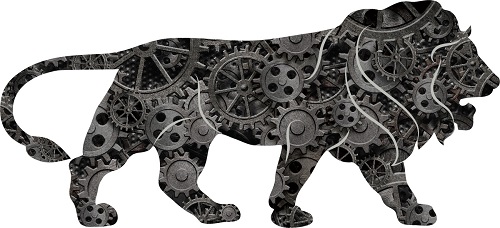Bharat Ratna Award
The highest civilian award of the republic of India is known as BHARAT RATNA. It came into existence on 2nd January 1954. The award was in recognition of extraordinary performance in the field of literature, science, public services and arts only .This award belongs to all people of India without any discrimination of sex, race and age. Previously award belonged to only limited criteria but in December 2011 the criteria was changed to include all fields of human endeavour.
Maximum 3 nominees may be awarded per year and recommendations for the same are specially made by PM to the President. A Sanad (certificate) signed by the President and a medallion in the shape of a peepal-leaf are the only two things being given to the recipients; no money is granted with the award.
In the Indian order of precedence, Bharat Ratna awardee comes at seventh position. But Bharat Ratna recipients are constitutionally prohibited to use award name as title as per Article 18 of the Constitution of India.
Since 1954, 44 distinguished individuals have been awarded with this prestigious and highest civilian award of the country; let’s have a brief introduction of these extraordinary men and women.
Bharat Ratna Awardees
Chakravarthi Rajagopalachari
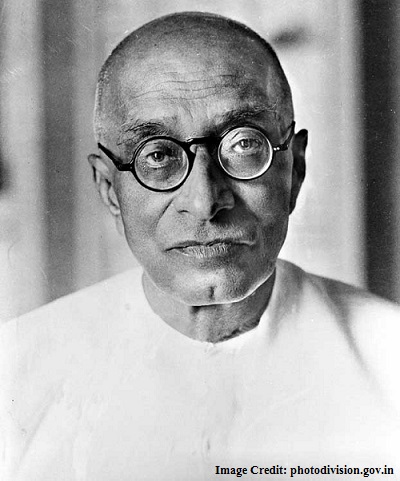
Chakravarthi Rajagopalachari was born on 10 December 1878 in Salem District of the Madras Presidency. He was well known as a politician, writer, Indian lawyer and an independence activist. In 1937-1939 he initiated a major movement for Dalit’s by removing restriction to entering them in Hindu temples, easing debt burden of farmers and compulsory education of Hindi in Institute. He is also a founder of Salem Literary society and gives suggestions for the welfare and scholarship for Dalit students. He introduced the ‘Modified System of Elementary Education’.
After Lord Mountbatten left India in 1948 he became the first and last Governor General of India and held that position till 1950. In 1959, he formed the Swatantra Party against Congress and this party stood for equality and government control over the private sector. He also worked on many other highest positions like: Premier of the Madras Presidency, Minister of the Home Affairs of the Indian Union, Governor of West Bengal and Chief Minister of the Madras State. He is always remembered for his remarkable and distinctive contribution to our country and for this contribution he was one of the first recipients to get the highest civilian award of India, the Bharat Ratna in 1954.
C. V. Raman
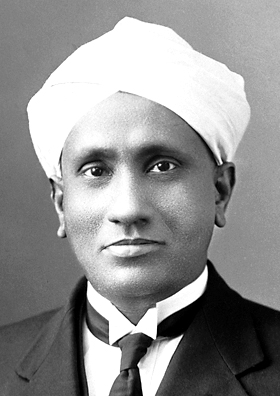
The great magnificent Indian Physicist Sir Chandrasekhar Venkata Raman was born on 7 November, 1888 (Thiruvanaikaval). He was a great follower of Mahatma Gandhi and his ideas. He completed his education from Presidency College, Chennai and University of Madras. He was a great researcher in field of Physics. He discovered the quantum nature of light and also explained that, when light travels through a transparent material, some of the deflected light changes its wavelength, further he also observed that the light quanta and molecules changes their energy which show itself as a change in the colour of the scattered light later named as Raman Effect.
In field of science, it was a remarkable discovery; he was the first Asian to get Noble Prize for his excellent discovery of Scattering of light. He also established ‘The Indian Academy of Sciences Bangalore’, which is one of the finest publishers of the best science journals all over the country. He also set up Raman Research Institute near Bangalore.
For his magnificent contribution to the Country in the field of Physics he was awarded in 1954, the highest civilian award, Bharat Ratna. Due to strong heart attack on November 21, 1970 the great scientist passed away.
Sarvepalli Radhakrishnan
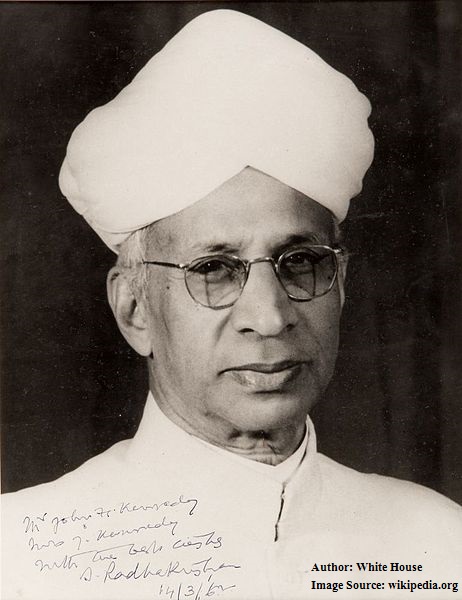
In 20th century this most prominent and leading Indian philosopher, academic and statesman was born on 5th September, 1888 at Thiruttani. In his entire life he chooses the extensive writing career. S. Radhkrishnan wanted to define religion of the spirit and Hinduism all over the world. His extensive knowledge about the western philosophy has earned him the reputation of being a bridge–builder between India and the west. His most of the philosophy was based on Advaita Vedanta.
He was awarded in 1954 with the highest award of the nation Bharat Ratna for his marvellous contribution in field of academics. In honour of Radhakrishnan meritorious service to mankind, India celebrates his birthday as a Teacher’s Day on 5th September. It was his view that the teachers should be the best minds in the country. He also chaired the position of the Vice chancellor of Andhra University and became the first Vice President of India (1952–62) and the second President of India from 1962 to 1967. On 17th April, 1975 at Chennai, this great leader and philosopher of India died.
Bhagwan Das
Bhagwan Das was among the 3 awardee in 1955 for the Bharat Ratna. The great Author and an Indian Theosophist was born on 12th January 1869 at Varanasi. He was appointed in the Central Legislative Assembly of British India. Das was a scholar in Sanskrit and he wrote approx. 30 books in Hindi and Sanskrit language. During the Non-co-operation movement he later joined the Indian National Congress. He was a founder of a National University named as Kashi Vidya Peeth. He lived 6 years as a sadhu and studied the ancient science of Nada Yoga under the guidance of his Guru Neem Karoli Baba.
In 60’s era he was an only living cultural icon. He was the open heart singer and first Kirtan Artist in America. In collaboration with Annie Besant he was instrumental in founding the central Hindu college which later became Central Hindu School. He died on 18 September 1958. He was the 4th recipient of this award.
Mokshagundam Visvesvaray
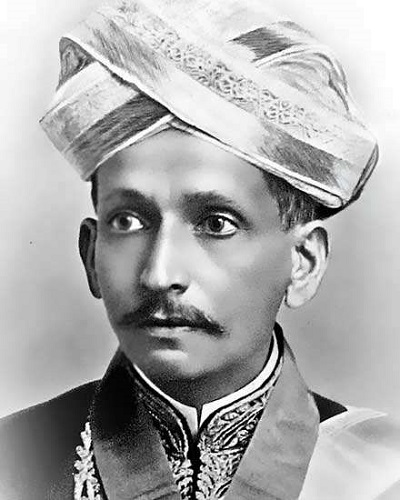
Sir Mokshagundam Visvesvaray had a long and respected career at the national and international level. The marvellous Indian Civil Engineer was born at Muddenahalli Village, Chickkaballapur District on 15 Sept, 1860. He completed his higher qualifications from University of Madras (1881) and College of Engineering, Pune (1883). He worked for the city of Hyderabad as a Chief Designer of the flood protection system.
In 1911, Sir Visvesvaray was chosen as a Companion of the Order of the Indian Empire. From 1912 to 1918 he worked on the position of the Diwan of Mysore and then he was knighted as a Knight Commander of the Order of the Indian Empire. He also received the appreciation from Indian government for his remarkable contribution to our country in different fields but especially for the education and the engineering sector. He expanded the boundaries of the engineering field and modified the study pattern of engineering sector. Every year on his birthday (15 Sept) India celebrates Engineering Day to give tribute to this great personality.
He was awarded with the Bharat Ratna in 1955. The great engineer passed away on 12th April, 1962.
Jawaharlal Lal Nehru
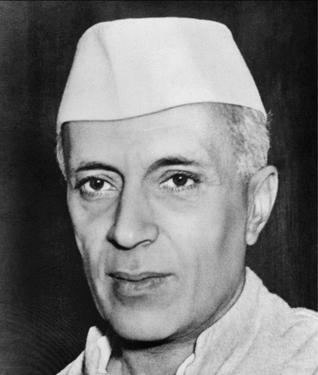
One of the most prominent leaders of India’s freedom movement and architect of the modern Indian nation, Jawaharlal Nehru was born on 14 November 1889. He studied at Trinity College, Cambridge and later was called on Bar to get trained as Barrister. After returning to India, Nehru ji got greatly involved in the freedom struggle. He was a great socialist and represented the left-wing wing within the Congress party. Gandhi ji was especially fond of him and mentored him as his most trusted ally. Nehru ji through his deep commitment and efforts quickly became the most important leader of the National movement after Gandhi ji. He became the Congress President for the first time in 1929 and declared that the Complete Independence from the British is the goal of national movement.
Nehru ji was a great believer in the modern thoughts of secularism, socialism and democracy; after Independence these visions were incorporated in the free India. He became the first Prime Minister of the independent India and governed the country till his death 27 May 1964. As the PM, he embarked upon to make India a modern, forward looking and progressive nation; several scientific and research institutions such as IITs and Atomic Energy Commission were founded; he gave great impetus to industrialization and started the mechanism of Five Year Planning for planned development of the country.
In foreign policy matters, he was one of the architects of Non-Aligned Movement and gave India a new direction which was of non-alignment from the power politics of two superpowers of the times, the US and USSR- this initiative made the newly independent nation free from Block politics and alignment. Non-align Movement is the great legacy of Nehru ji which is still one of the main foreign policy themes of the country.
Nehru ji’s health deteriorated after the war with China in 1962 and the debacle faced by Indian forces in the same. His health continued to decline and on 27 May 1964 he died of heart attack. The Bharat Ratna was awarded to him in the year 1955.
Govind Ballabh Pant
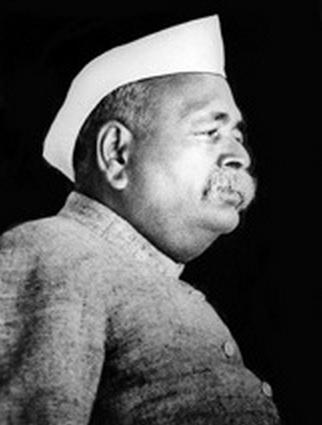
A Great freedom activist G. B. Pant Ji was born on 10 Sept 1887 at Khoont village near Almora. He was popularly known as Pandit Pant by the people of India. He started movement to established Hindi as an official Language of India. He was also a First Chief Minister of Uttar Pradesh (1950-1954).
In 1914 as a lawyer Pant started to work actively in the movement against the British Raj. He attained the approval of the other members of the party and with his exceptional leadership skills he soon joined the Congress Party as a Deputy Leader. He participated in several movements during the freedom struggle of India with Gandhi Ji and Pt. Jawaharlal Nehru. In year 1955 he also served the position of Union Home Minister of our country till 1961.
When he became a chief minister he eliminated the Zamindari System for welfare of Indian Society and it’s a great move towards the development of India. On the name of this magnificent politician many schools, hospitals and university are opened worldwide. All over the world Pantnagar University is a best example of agricultural university and for exceptional work done by him he was awarded one of the most important awards of the country, the Bharat Ratna in 1955.
Maharishi Dhondo Keshav Karve
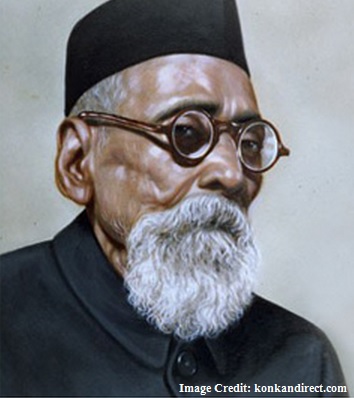
On April 18, 1858 Annasaheb Karve was born at Sheravali, Maharashtra. He completed his bachelor’s degree in mathematics from Elphinstone College in Bombay (Mumbai). During 1891-1914, Karve started teaching mathematics at Fergusson College in Pune. After that Karve decided to dedicate his whole life to the upliftment of female education. He did lots of work for uplifting the status of widows. He encouraged widow remarriage and helped their children’s.
Karve founded several organisations for the welfare of women such as Widhawā-Wiwāhottejak Mandal in 1893, Maharishi Karve Stree Shikshan Sanstha etc. After that he established the first university for women named as Shreemati Nāthibāi Dāmodar Thāckersey Indian Women’s University in India (Pune), 1916. The Government of India recognized SNDT University as a statutory university in 1949. He is also a founder of the Samatā Sangh (Association for the Promotion of Human Equality).
Besides dedicating his life to the freedom and education of women in India, he raised his voice against for the abolition of the untouchability in Hindu Society and Caste System. For his life time contribution to an Indian Society he was awarded with the Bharat Ratna by Government of India in 1958.
Bidhan Chandra Roy
A Great Physician-Surgeon Bidhan Chandra Roy was born on 1 July, 1882 in Bihar. He was a meritorious student. He pursued medical career and because of his exceptional talents cleared two of the most prestigious medical degrees, M.R.C.P. & F.R.C.S. in record time.
He dedicated his whole life for work in the area of medicine, science, philosophy, literature and arts. He was also involved in India’s freedom movement alongside Gandhi ji. Later on in 1948, he was elected as the Chief Minister of West Bengal and served the State for next 14 years. As a CM, he founded five important cities in the Sate: Durgapur, Kalyani, Bidhannagar, Ashokenagar, and Habra. For his contribution in the development of West Bengal he is being remembered as the architect of modern West Bengal.
For his extraordinary contributions in field of medicine and development of West Bengal, Dr. Roy was awarded with Bharat Ratna on 4th Feb 1961. Every year, on 1st July (Dr. Roy’s birth and death day), the country celebrates the National Doctor’s Day to remember Dr. Bidhan Chandra Roy and his contributions for India.
Purushottam Das Tandon
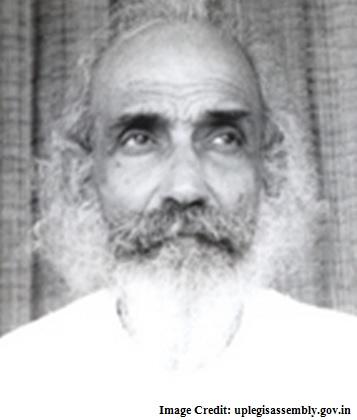
Born on 1 August 1882, Purushottam Das Tandon (Died on 1 July 1962), was a great freedom fighter from Uttar Pradesh in India. He was known for his efforts in farmers’ movements and he served as the President, Bihar Provincial Kisan Sabha in 1934. He also remained President of Servants of the People Society (Lok Sevak Mandal), a social service organisation founded by Lala Lajpat Rai, in 1921.
Purushottam Das Tandon is best remembered for his contribution towards helping to make Hindi the official language of India. Later he was elected to the Constituent Assembly of India in the year 1946. He also honoured the post of Speaker of the Legislative Assembly of Uttar Pradesh for a period of 13 years from July 31, 1937 to August 10, 1950.
Dr. Rajendra Prasad
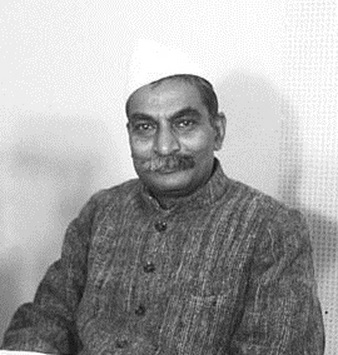
This great Jurist and exceptional freedom movement activist was born in Zeradei, Bihar on December 3, 1884. Dr. Rajendra Prasad was a very meritorious student in his childhood; in 1915, Rajendra passed the Masters in Law examination with honours and won a gold medal. Later, he completed his Doctorate in Law as well.
Dr. Rajendra Prasad was one of the foremost disciples of Gandhi ji and he played a crucial role in Indian freedom struggle. His role was instrumental during Non-Cooperation Movement, Salt Satyagrah and Quit India Movement alongside other freedom fighters.
When the Constituent Assembly was elected for the making of Indian Constitution, Dr. Rajendra Prasad was chosen as the Chairperson of the Assembly for his exceptional ability and knowledge on constitutional matters.
After Independence he was elected as the nation’s first President. Dr. Prasad transformed the imperial splendour of Rashtrapati Bhavan into an elegant “Indian” home.
In 1962, after 12 years as President, Dr. Prasad retired, and was subsequently awarded the Bharat Ratna, the nation’s highest civilian award. He passed away on February 28, 1963.
Dr. Zakir Husain
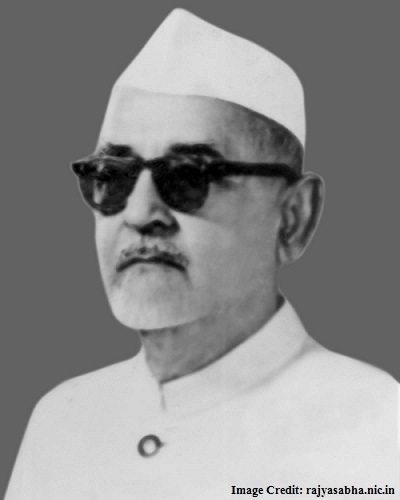
Dr. Husain was born in Hyderabad, Telengana on 8 February 1897. He was a great educationist, politician of India and a great believer of Gandhian philosophy.
He was an organizer of vocational educational system in India. His efforts were instrumental in the foundation of Jamia Millia Islamia (a central university). Dr. Husain was one of the most prominent educational thinkers and practitioners of modern India. He engaged himself with movements for better educational reforms in India.
He was closely associated with the Indian freedom movement. He was appointed as a governor and did a lot of work for the upliftment of Bihar state. He also became the first Muslim President of India on 13 May 1967.
For his exceptional contribution in politics and education field he got the Bharat Ratna in 1963. Dr. Husain died on 3 May 1969.
Dr. Pandurang Vaman Kane
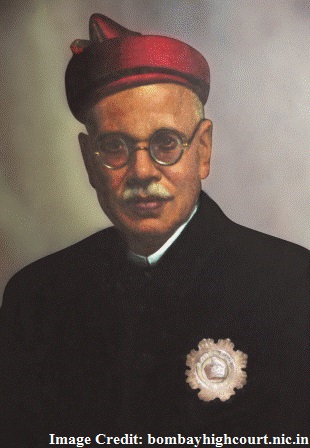
Dr. P V Kane was born on 1880 in Ratnagiri district, Maharashtra, India. He was a notable Indologist and Sanskrit scholar; a great researcher wedded to social reforms. Dr. Kane is famous for his monumental work: History of the Dharmasastra published in five volumes- the first in 1930 and last in 1962. This work is great scholarly treatise on ancient social laws and customs of India. The work is known for its spread and depth.
For his in-depth study of ancient Indian texts which enables us to understand social processes in ancient India, he was awarded the Bharat Ratna in 1963. This great scholar died on 1972.
Lal Bahadur Shastri
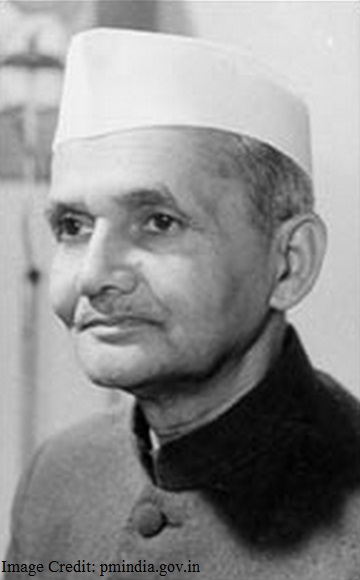
Lal Bahadur Shastri, a very humble person with great resolve, was born on 2 October 1904 at Mughalsarai, Varanasi, Uttar Pradesh. From the early childhood he developed in himself virtues of honesty, service, brotherhood, courage etc. He was a man of principles; to oppose caste system he dropped his surname and when in Independent India he was the Railways Minister, he resigned on principles when a train accident happened in which 150 people died.
Shastri ji joined the freedom movement in the 1920s after getting inspired by Gandhi ji’s call. He was a great believer in Gandhian philosophy and also a great champion of socialism. After Independence, he served the country at various posts as minister and after the death of PM Jawaharlal Nehru he became the second Prime Minister of the country. His years as PM were very eventful; he led the country with great success in the war of 1965 against Pakistan. He gave the slogan “Jai Jawan, Jai Kisan” during the war which became very famous and is still being remembered. Also, he promoted and started the White Revolution for increasing the production of milk in the country; laid foundation of the Green Revolution as well to increase the production of food grains in the country so as to make India self-dependent in agricultural products.
This great son of the soil died of heart attack on 11 January 1966 at Tashkent, USSR when he was there for signing the Tashkent Declaration with Pakistan after the ceasefire with Pakistan. For his exceptional services for the country he was awarded with the Bharat Ratna in the year 1966, the first person to be awarded posthumously.
He laid the foundation stones of the well-productive schemes like Green Revolutions and White Revolutions. He was the first person to be posthumously awarded the “Bharat Ratna”.
Indira Gandhi
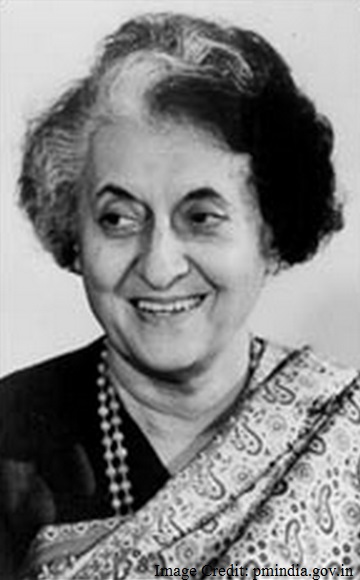
Also known as Indira Priyadarshini, she was the only child of the India’s first PM and great freedom fighter Jawaharlal Lal Nehru. Indira Gandhi was born on 19 November 1917 at Allahabad. Form the early childhood, due to her family’s close association with the freedom movement, Indira remained politically very active.
After the death of Nehru in 1964, Lal Bahadur Shastri became the second PM of India and in his ministry Indira Gandhi took the charge of Information and Broadcasting Minister. But the untimely death of Shastri in 1966, Indira was named as the leader of Congress Party and thus became the Prime Minister of India.
She was the first woman PM of India and remained in office for three successive terms from 1966 to 1977 and then again for the fourth term in 1980 to till her assassination in 1984. Indira Gandhi is remembered as one of the strongest ladies of 20th century world and during her time as PM of India, she successfully tried to make India as modern powerful nation of the world.
As a landmark reform, she abolished the Privy Purse and nationalized 14 major Banks in 1969. Indira Gandhi also supported East Pakistan’s fight for Independence against Pakistan and in 1971 fought a war against Pakistan for the same purpose which resulted in India’s victory and in the formation of Bangladesh as an Independent country.
She was awarded the Bharat Ratna in the year 1971 while she was the PM of India. Though, the Emergency of 1975-77 is a black mark on her overall distinguished political and social career, she was a very strong leader of India at a time when the whole world was going through a tremulous period both politically and economically. Indira Gandhi was assassinated by her bodyguards on 31 October 1984 at her home in Delhi.
V.V. Giri
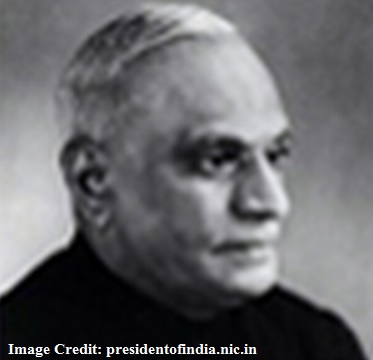
Varahagiri Venkata Giri was born on 10 August 1894 in Berhampur, Orissa; he was popularly known as V. V. Giri. He championed the cause industrial workers in India and was well known as a Trade Unionist; he was the founder member of the All India Railwaymen’s Federation in 1923.
In 1928 V.V.Giri set up the Bengal Nagpur Railway Association which led the workers of the Bengal Nagpur Railway for the rights of the workers in a peaceful strike. Success of the strike forced the British Indian government and the Railway Management to accept workers’ demands. This was a great moment for the labour Movement of India. Further, in the year 1929 with N.M.Joshi and other members he formed the Indian Trade Union Federation (ITUF) which worked for the rights of workers all over India.
After independence he remained active as a politician and was elected as the fourth President of India from 24 August 1969 to 24 August 1974. In 1975 Giri was honoured with the Bharat Ratna. He died on 1980.
Kumarasami Kamaraj
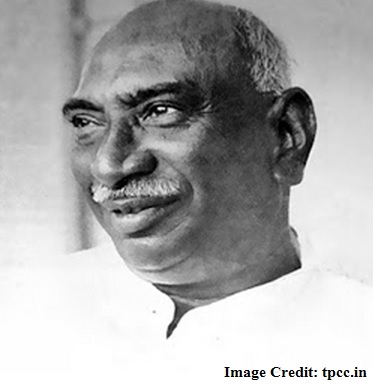
Kumarasami Kamaraj was a great leader born on 15th July 1903. In 1960 he was well recognized as the “Kingmaker” in Indian politics.
He was actively involved in Indian Independence Movement. Kamaraj started the Sword Satyagraha in 1927 in Madras. On 13 April 1954 Kamaraj became the Chief Minister of Madras Province. He is still remembered for bringing school education to the millions of rural poor children by introducing free education; he also started a free Midday Meal scheme for children.
Later Kamaraj also started various Irrigation schemes; Dams and irrigation canals were built across higher Bhavani, Aarani, Vaigai, Pullambadi, Mani Muthar, Krishnagiri, Amaravathi, Sathanur, Parambikulam and Neyyaru among others.
He died on 2 October 1975. For his contribution in education and politics he was awarded the Bharat Ratan in 1976.
Mother Teresa
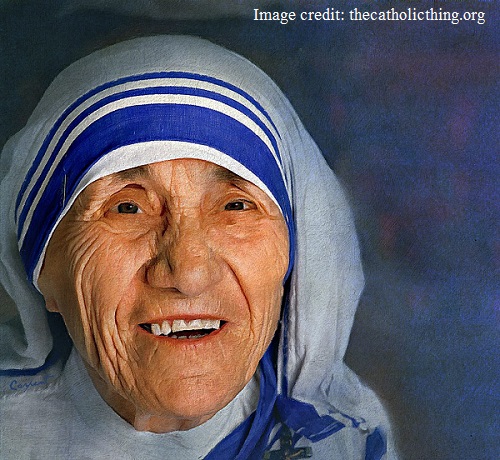
Mother Teresa was born on 26 August 1910. She was a Roman Catholic sister and missionary. She founded the Missionaries of Charity, which in 2012 consisted over 4500 sisters in 133 countries.
In 1948, she started her missionary work with the poor people of India. The foundation’s aim was to create a new community which could help the poorest of the poor. Mother Teresa runs many homes for poor with diseases like HIV/AIDS, tuberculosis & leprosy (soup kitchens; mobile clinics & dispensaries). For children’s they also started family counselling programmes, schools & orphanages.
Mother Teresa opened the 1st Home for the poor people in 1952, in city of Calcutta (Kolkata). With the help of Indian officials she converted an abandoned Hindu temple into the orphanages. For her incredible contribution to Indian Society she was awarded in 1979 with Nobel Peace Prize & the Bharat Ratna.in 1980. She died on 5th September, 1997 in Kolkata, (West Bengal), India.
Vinayak Narahari Bhave
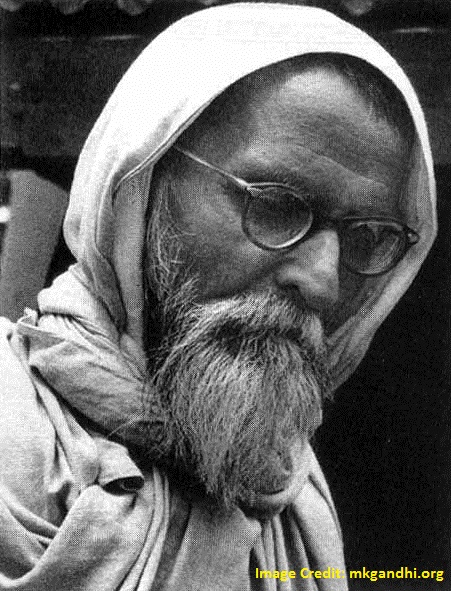
On 11 September 1895, Vinoba was born into a Chitpavan Brahmin family in a village Gagode, (Maharashtra). Bhave was a thinker, scholar, and writer who wrote several books. As a translator of Sanskrit his editions of books were accessible to the common man; he was popularly known as Acharya.
V.N.Bhave was considered as a National Teacher of India. He was one of the prominent figures in India’s Independence movement with Gandhi Ji. Against the British rule in 1940 he was chosen as the 1st Individual Satyagrahi.
Vinoba Bhave started movement at Pochampally of nalgonda district Telengana named as Bhoodan Movement on 18 April 1951 where he asked to donate land from their owners and give it to the poor’s and landless people for the cultivation. In 1954 he started Gramdan and asked for donations of whole village. As a result of his great movement he got 1000 villages in donation. For His unforgettable contribution in Independence Movement and Bhoodan Movement he was awarded the Bharat Ratna in 1983. On 15 November 1982 the great social reformer passed away.
Khān Abdul Ghaffār Khān
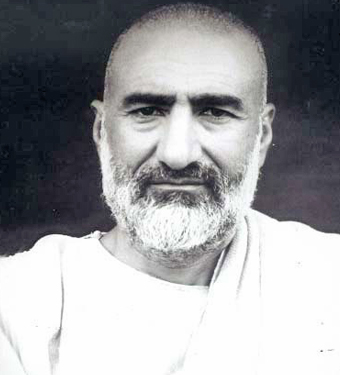
Khan Abdul Ghaffār Khan (nicknamed as Bacha Khan) was born on 6 February 1890. Bacha Khan was a spiritual leader and a Pashtun political leader. He was well known as a devout Muslim and a lover of non-violent movement. He was a great believer in the teachings of Mahatma Gandhi; he participated with him in India’s Independence movements like Salt Satyagrah and Red Shirts’ Movement.
In 1929, against British Empire he started the movement ‘Khudai Khidmatgar’ (“Servants of God”). When demand was made for the partition of India, Bacha Khan strongly opposed the same. In 1920s, Ghaffar Khan started “Red Shirts” movement to achieve a goal of independent, secular and united India.
For his great contribution and devotion to the country he was awarded the Bharat Ratna in 1987. He died on 20th Jan 1988.
M.G. Ramachandran
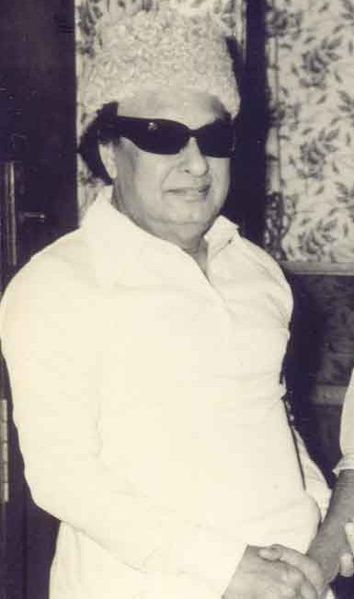
A famous Tamilian film actor Marudhur Gopalan Ramachandran was born on 17th January 1917 in Nawalapitiya, Sri Lanka. He worked in Tamil films as a director, actor and producer. For the next three decades in 1940 he dominated the Tamil film industry through his acting skills.
Later he started his political carrier and formed his own party the Anna Dravida Munnetra Kazhagam (ADMK). He was elected as a Chief Minister of Tamil Nadu on 30 June 1977 (the 1st film actor in India to become a state Chief Minister). After becoming chief minister he emphasis on education and social development of a common man.
In Tamil Nadu he started a special bus service for women’s known as ‘Women’s Special buses’. He also imposed ban on liquor in the state, started schemes for preservation of historical monuments and old temples to increasing the income of state’s tourism. For his contribution to Indian society he was awarded with the highest civilian award the Bharat Ratna in 1988 after his death. He died on 1987.
B. R. Ambedkar
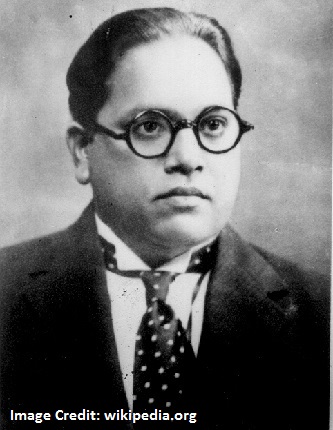
Fondly called as Babasaheb, Dr. Bhim Rao Ambedkar was born on 14 April 1891 in so-called low caste Dalit family. He was a brilliant student and completed his studies in various prestigious universities of India and world.
Dr Ambedkar took the cause of Dalit in the country and fought for their rights all his life. He was very critical of the inhuman and discriminatory practices prevailing in the country against the untouchables; he opposed Brahmanism and evils of Hindu social order. To fight for the rights of untouchables and depressed classes, he established Bahiskrit Hitakarni Sabha in 1924.
He was totally opposed to Varna System of Hindu society and was even critical of Gandhi ji on the issue because Gandhi ji had faith in Varna System based on Karma and not on birth.
In the making of Indian Constitution, he was elected as the chairman of the Drafting Committee; in the making of our Constitution, his was perhaps the greatest contribution. In the Constitution also he helped include provisions of equality for Dalit and provision for abolition of untouchability.
Thus, his role in the upliftment of so-called depressed classes in Indian society is unparalleled; and for his contribution, Babasaheb Bhim Rao Ambedkar was awarded with the Bharat Ratna in the year 1990.
Nelson Mandela
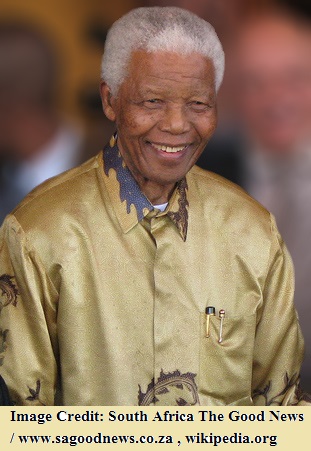
Nelson Rolihlahla Mandela, one of the greatest revolutionary leaders of 20th century, was born on 18 July 1918 at Mvezo, South Africa. He fought an extended battle against the inhuman practice of apartheid in South Africa and served 27 years in prison from 1962 to 1990. He was a believer in Gandhian ways of non-violent protests but at the same time employed violent means of struggle as well.
After completing his degree in Law, he joined anti-colonial struggle and became a member of African National Congress to fight for the rights of Black people in South Africa. Soon he became the centre figure of the anti-apartheid movement and got support from all over the world. Due to his revolutionary activities and anti-colonial politics he was imprisoned and sentenced to life imprisonment in 1962 by the then South African regime; but even in jail he continued his battle and activist from all over the world supported his cause and an international campaign developed for his release. Even so he had to serve 27 years in prison; in 1990 he was released and through negotiations with the government of the day he succeeded in ending the barbaric practice of apartheid in South Africa.
In first multiracial elections in 1994, Nelson Mandela’s party ANC emerged victorious and he became the first black President of South Africa.
In his honour and to recognize his contribution towards elimination of racial discrimination all over the world, India awarded him with its highest civilian award the Bharat Ratna in 1990. This, one of the greatest human beings died on 5 December 2013.
Rajiv Gandhi
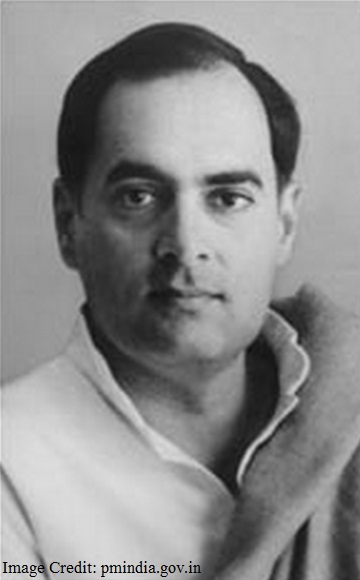
Rajiv Gandhi was the elder son of Indira Gandhi; he was born on 20 August 1944. Though belonged to a highly political family, Rajiv remained apolitical almost all his life. He came into politics only reluctantly when his younger brother, Sanjay Gandhi died in 1980.
Rajiv Gandhi was chosen as the leader of Congress party after the assassination of her mother Prime Minister Indira Gandhi on 31 October 1984; he became the Prime Minister of India in 1984 and remained in office till 1989.
His years in office were good for economic liberalisation and technological advances of the country; he was instrumental in the creation of MTNL and VSNL which expanded the telephone network in India considerably. Due to Rajiv Gandhi’s efforts as PM, the seeds of Information Technology (IT) Revolution were planted in India which later became helpful in making India an IT powerhouse of the world.
Rajiv Gandhi was assassinated by a suicide bomber on 21 May 1991 during an election rally; he was awarded the Bharat Ratna in 1991 for his public service.
Vallabhbhai Jhaverbhai Patel
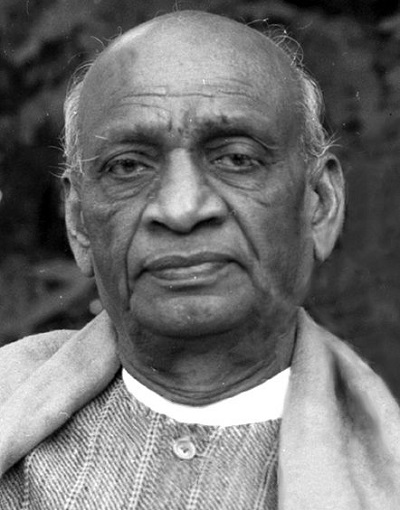
This great freedom fighter and ‘Iron Man of India’ was born on 31 October 1875 in Nadiad, Maharashtra. After meeting Gandhi ji and at his encouragement, Patel gave up his successful career in advocacy to fight for the Independence of India.
As a leader his first movement was at Kheda district in Gujarat where he ran a door-to-door campaign and persuaded people to not to pay taxes as there was a famine and spread of plague in the district; the movement became very successful and British had to accept their demands of tax relief; thus emerged one of the greatest leaders of our freedom struggle. Later on, Vallabhbhai Patel devoted himself completely in various freedom movements such as Bardoli Satyagrah, Non-cooperation movement, Quit India movement etc. He was a trusted and loyal soldier of Gandhi ji and always remained true to his teachings. Because of his enormous popularity with masses he was accorded with the title of ‘Sardar’ by the people.
After Independence, the role played by Sardar Patel was even more important in the making of Indian nation; he was the first deputy Prime Minister and Home Minister of India; through his relentless efforts and iron-will, he integrated more than 600 Princely States into Indian the federation of India. And for this unforgettable service to the nation his name will always be remembered with reverence.
Sardar Patel died on 15 December 1950. He was awarded with the Bharat Ratna in the year 1991 as a tribute to his services to the Nation.
Morarji Desai
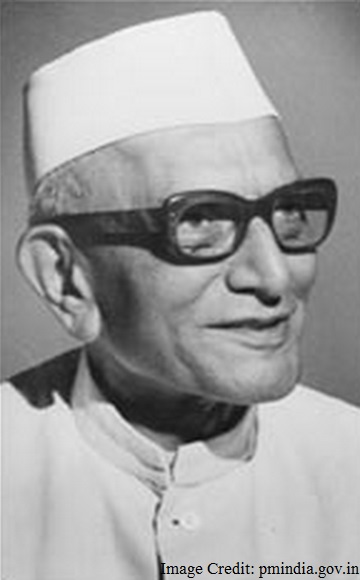
Born on 29 February 1896, Shri Morarji Desai was one of the most prominent leaders of independent movement. He participated in various movements organized by Gandhi ji and got arrested several times. Also, he held several governmental portfolios such as: CM of the then Bombay State, Home Minister, Finance Minister, Deputy PM and finally the Prime Minister of India.
Morarji was known for his administrative skills and toughness. In 1969 he parted ways with Indian National Congress and during Emergency emerged as one of the most critical voices against Indira Gandhi’s regime. In the elections of 1977 when first non-congress government was formed at the centre, Morarji was elected to become the Prime Minister of India.
During his short period in PM office he reversed many of the negative Constitutional provisions added by the earlier regime of Indira Gandhi. Also, he tried to make peace and establish good relation with Pakistan and China.
He had to resign in 1979 due to internal factionalism in his party. He was awarded with the Bharat Ratna in the year 1991.
Morarji Desai died on 10 April 1995 at the age of 99.
Abul Kalam Azad
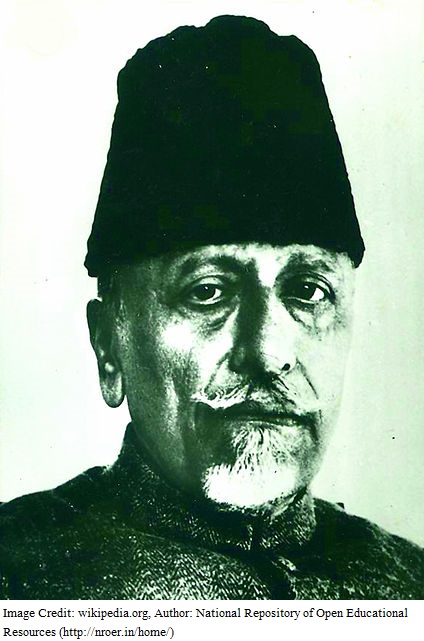
Abul Kalam Azad was born on 11 November 1888 in Mecca. He was a great scholar, journalist, educationist and freedom fighter. From a very young age he was of revolutionary leanings and was fiercely critical of exploitative policies of the British.
He entered into journalism and openly attacked British Government for ant-India policies; at the same time, he also wrote about the need for Hindu-Muslim unity in the fight against British; in 1912, he started a weekly newspaper Al-hilal.
Later on, he supported the Khilafat Movement and came into the contact of Gandhi ji. And after getting influenced by him, Azad joined the Indian National Congress. He became the youngest President of the Indian National Congress in 1923. Azad played very significant role in several movements initiated by Gandhi ji such as Namak Satyagrah, Civil Disobedience Movement, Quit India Movement etc. He always appealed and worked for Hindu-Muslim unity and remained critical of such Muslim and Hindu leaders who played communal politics.
He was a prominent member of the Constituent Assembly and after Independence became the first Education Minister of India. Maulana Azad played important role in shaping India’s education system; he was instrumental in setting up of several institutions of higher learning such as IITs in 1951, University Grant Commission in 1953, Central Institute of Education Delhi etc.
Apart from these, Maulana Azad was also a poet and a writer; his classic book India Wins Freedom is one of best accounts of India’s freedom struggle. He died on 22 February 1958; for his immeasurable contribution in making of modern Indian nation he was awarded posthumously the Bharat Ratna in 1992.
Jehangir Ratanji Dadabhoy Tata
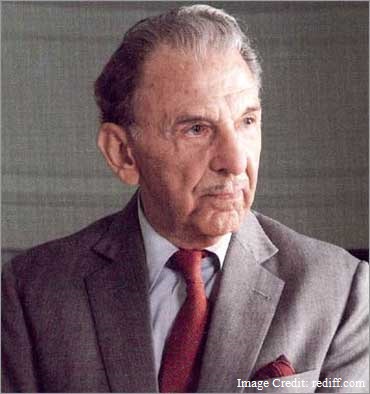
Born on 29 July 1904 in Paris, France, J R D Tata was a French-born, Indian aviator and a great business tycoon. He obtained the 1st pilot licence issued on 10 February 1929 in India. Thus he is known as the ‘father of Indian civil aviation’. India’s first commercial airline was founded by J. R. D Tata named as Tata Airlines in 1932, later in 1946 it became Air India , now it is India’s National Airline. He remained the Chairman of Tata Sons for 50 years. He also founded Tata Motors in 1945. For his ultimate achievements in aviation sector, he was honoured with the title of ‘Honorary Air Commodore of India’.
In 1956 he established India’s first independent economic policy institute and Tata Consultancy Services as Tata Computer Centre in 1968. The National Council of Applied Economic Research, New Delhi was founded by J. R. D Tata.
In 1992, he was honoured with the Bharat Ratna. He was one of the most innovative Indian entrepreneurs. He founded one of the largest Industrial Houses of India.
He died on 29 November 1993 in Geneva, Switzerland.
Satyajit Ray
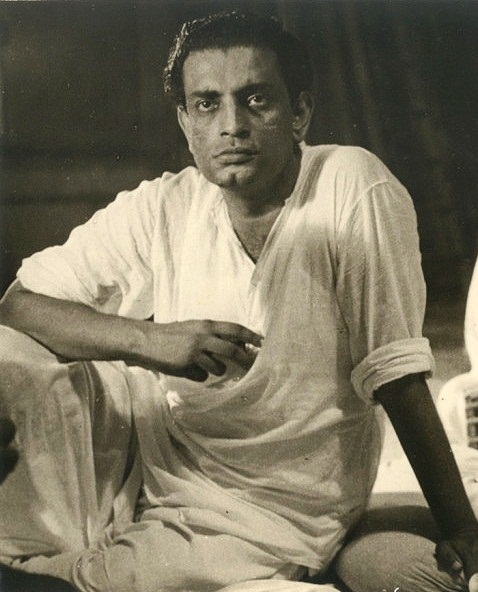
This extraordinary Indian Filmmaker was born on 2 May 1921 in Calcutta. Satyajit Ray was a cultural icon of Bengali communities and in 20th century he was recognized worldwide as one of the most talented filmmakers.
His films are grounded on historical drama and most of them are based on science fiction. Primarily he refused to produce films other than Bengali language. Ray directed 36 films as a commercial artist. He was an Independent filmmaker his films includes documentaries, feature films & shorts stories. He was a great film critic, publisher, music composer, fiction writer & graphic designer. He also authored several novels, short stories primarily targeted to small children. His 1st film, Pather Panchali in 1955, won 11 International prizes, as well as the Best Human Document (1956) at Cannes Film Festival.
In his whole career he was awarded with many major awards which include 32 Indian National Film Awards and in 1979, with the Honourable Prize at eleventh Moscow International Film. Ray was awarded with the Honorary Academy Award (the Oscars) in 1992. He was also honoured with Bharat Ratna in 1992 for his incredible contribution to Indian Cinema. On 23th April, 1992 the great legend of Indian Cinema passed away.
Gulzarilal Nanda
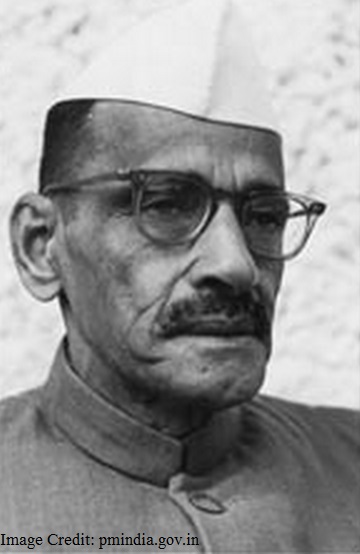
This great son of India was born on 4 July 1898; he was a prominent freedom fighter, economist of great repute and labour leader. After acquiring his research degree in labour matters from Allahabad University he became the professor of economics and labour studies at National College, Bombay in 1921.
Nanda ji gave up his career as professor and joined the national freedom movement on Gandhi ji’s call; he was the true believer in the principles of Gandhi ji. He always held important posts related to labour related matters; chosen as Labour Minister (1946-50), he worked for the realization of Labour Dispute Bill. Later on he helped form the National Trade Union Congress. After independence, Gulzarilal represented India at various International Labour Conferences worldwide.
He twice served as the interim Prime Minister of India, once when Jawaharlal Nehru died and next when Lal Bahadur Shastri died. Gulzarilal Nanda was a man of values and principles; he never exploited his position for personal gains and had no personal property on his name.
He was awarded the Bharat Ratna in the year 1997 for his devotion and service for the motherland. He died on 15 January 1998.
Aruna Asaf Ali
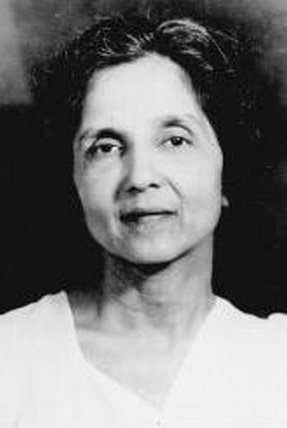
Aruna Asaf Ali was born in an orthodox Hindu Bengali family on 16 July 1909 in Kalka, Haryana. She was one of the most prominent women leaders at the time of India’s freedom struggle. She had an extraordinary spark that ignited the struggle movement among citizen of India.
In 1942, during Quit India Movement, she was involved in an unforgettable event when she unfurled the national flag at the Gowalia Tank maidan; she became a legend for thousands of youth of Indians.
The great socialists Aruna Ali formed a socialist party of her own. Later in 1955 this group combined with Communist Party of India and then she became a Central committee member. She also served a position of Vice President of the All India Trade Union Congress.
She was honoured with the Lenin Prize for peace in 1975 and in 1991, the Jawaharlal Lal Nehru award for International understanding. She died on 29th July, 1996. She was awarded in 1998, India’s highest civilian award, the Bharat Ratna. Later in 1998 she was also honoured with a stamp issued by the Indian Postal Service.
A. P. J. Abdul Kalam
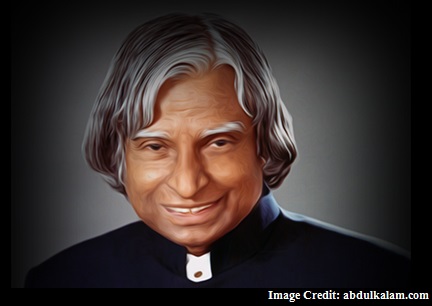
A great Indian Scientist A.P.J Abdul Kalam was born on 15 October 1931 at Rameswaram and studied physics and aerospace engineering. All his life he worked as a scientist in premier research institutions of India- DRDO (Defence Research and Development Organisation) and ISRO (Indian Space Research Organisation).
He was one of the main architects of India’s Missile Programme and due to his unparalleled efforts India is now a force to be reckoned with in the field of Missile Technology.
Due to his humble and inspiring personality, Dr Kalam is fondly referred as Missile Man of India; he has written several inspirational books also such as-India 2020, Wings of Fire and Ignited Minds.
In 2002 he was elected as the 11th President of India and served till 2007; and due to his popularity among masses he was called as the People’s President.
Dr. Kalam was visiting faculty in several Top University of India and word such as IITs and IIMs. He was awarded with the Bharat Ratna in the year 1997 for his valuable contribution in the field of science and defence modernization.
He died on 27 July 2015 in Shillong.
M. S. Subbulakshmi
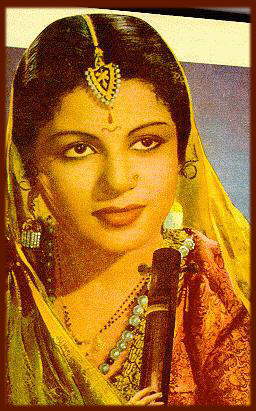
M.S.Subbulakshmi was born on 16 September 1916 in Madurai; popularly known as M.S., She was one of the most famous Carnatic singers.
Her 1st album was released when she was only 10 year old. She was trained in classical Carnatic music under the guidance of Semmangudi Srinivasa Iyer. She also learned Hindustani classical music.
She had a command on Kannada classical music but Apart from this she also sang classical music in different languages like in Tamil, Sanskrit, Gujarati Malayalam, Hindi, Telugu, Bengali, etc. Apart from a marvellous singer she was an actress too. She performed in many films like Meer & Sevasadanam, Savitri. She also performed in Far East, New York (Carnegie Hall), Canada, London, Moscow, etc.
She had tremendous contributions in the field of classical music; works include Suprabhatam, Kurai Onrum Illai, Bhajagovindam, Hanuman Chalisa, Vishnu Sahasranamam, etc. Her most famous & outstanding composition was the song Vaishnava Janato that bring tears to all listeners. M.S. was awarded the Bharat Ratna in 1988 the 1st musician ever to be awarded in music field. She died on 11 Dec, 2004 in Chennai.
Chidambaram Subramaniam
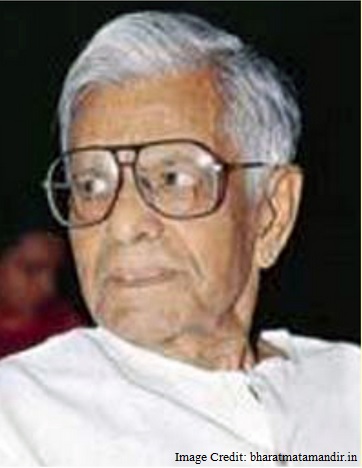
Chidambaram Subramaniam was born on 30 January 1910 in Senguttaipalayam. He was a Freedom Fighter and a Political Leader of India. He was an honourable food minister who transformed the nation to focus on the self-productivity of wheat and spreading the use of a new variety of wheat used for cultivation to millions of farmers to make India capable of harvesting wheat production rather than importing to our country.
He is also known as the political architect of the Green Revolution of India. In 1990 he became the Governor of Maharashtra and by transforming the Raj Bhavan into a public action zone led numerous meetings basically focused on industrialists, academics, prominent citizens on critical issues of the society, representatives of non-governmental organizations. Amongst all his accomplishments and contributions, his best achievement has been the growth of India’s Agricultural Policy. He established Bharathidasan Institute of Management, Tiruchirappalli and the National Agro Foundation, Chennai. He was honoured with the highest civilian award of India, the Bharat Ratna in 1998 for his contributions. Chidambaram Subramaniam died in Chennai on 7 November 2000.
Jayaprakash Narayan
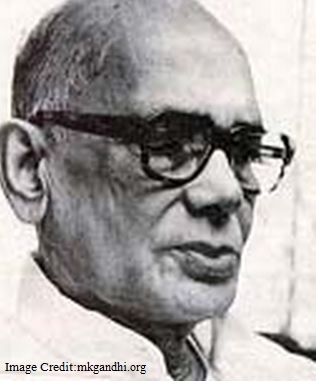
Jayaprakash Narayan or JP was born on 11 October 1902 in Saran District of Bihar. He was a prominent freedom movement leader, socialist and leader of the masses. Since childhood, he was a brilliant student and after completing his initial education in Bihar he went to USA to pursue higher education.
But after returning to India, he joined the main stream political movement against the British and participated in various movements led by Gandhi ji. After independence, JP decided to quit politics and remained aloof for several years. He again returned to politics in Bihar in 1960s; he was very discontent about the condition of poor in the country, the rising prices, corruption etc.
JP was very dear to the masses and for the same reason he was popularly called as Lok Nayak. He came to the fore as the most important leader during the first half of the 1970s against the so-called corrupt practices of Prime Minister Indira Gandhi. He appealed to the masses for the Sampoorna Kranti or the Total Revolution; the Emergency was imposed on 25 June 1975 and JP along with his supporters was arrested. But the movement gained momentum in his name across the country and in the elections of 1977 the Congress party under the leadership of Indira Gandhi lost badly, the collective opposition under the guidance of JP won. But he didn’t take any post in Government and remained detached.
He died on 8 October 1979; Lok Nayak Jai Prakash Narayan was awarded posthumously with the Bharat Ratna in 1999 to honour his services to the society and country.
Ravi Shankar
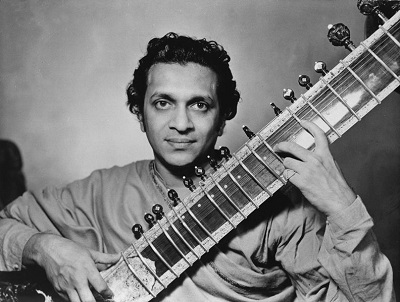
Ravi Shankar was born on 7 April, 1920 in Varanasi. In 2nd half of the 20th Century he was one of the best Indian Musician and best known sitar player. He learnt his sitar under the distinguished musician Ustad Allauddin Khan.
He had a distinctive playing style from that of the contemporary music. His performances begin with jor, solo alap & sitar playing was influenced by the serious and slow dhrupad category. From 1949 to 1956, Ravi Shankar worked as a Music director, composer of All India Radio (New Delhi). He was accorded with the title of Pandit out of respect.
Pt Ravi Shankar toured the whole Europe and Americas in 1956 playing Indian classical music and made it popular worldwide. He did several performances with great violinist Yehudi Menuhin and with Beatles guitarist George Harrison. Shankar wrote numerous compositions for sitar and orchestra, and continued touring the world in the whole of 1970s and 1980s. Pt Ravi Shankar, thus, through his genius in sitar playing made India and its classical music proud all over the world. For his distinct and soulful music albums, he was thrice awarded with the Grammy Award, the most illustrious music award in the world.
Therefore, to recognize and honour his distinguished services for the country he was awarded with India’s highest civilian honour, the Bharat Ratna in 1999.
He continued playing sitar till his death on 11 December 2012.
Amartya Sen
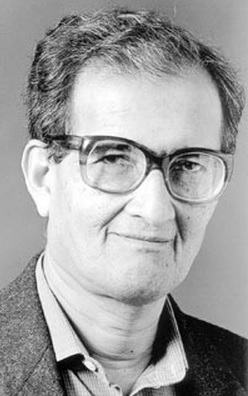
Amartya Sen, one of the most influential and distinguished economist of the world was born on 3 November 1933 at Shantiniketan, West Bengal, India. Sen completed his education from Presidency College in Kolkata. He had worked with number of universities in England & India, including the University of London, Universities of Delhi and Jadavpur, University of Oxford and the London School of Economics. He was a professor of economics & philosophy in Harvard University.
As an Indian Economist Sen had done a lot of work for the development of practical solutions for shortage of food. He also focused on the situation of poor Indian and inspired researchers attention towards the issues related to basic welfare. His work influenced government of India to focus towards food crises of India. His view was wide and it motivates policy makers not only for short term but alleviating instant suffering and finding the way to replace the poor lost income such as stable the food prices in India and make different work projects for public. Sen Social welfare addressed problems against –majority rule, availability of information about poor conditions and rights of an individual.
He also provided the theoretical work & explanation on inequality among men and women. He is a social reformer of India & suggested government to look after Public Health and improvement in education sector. In the field of Economic Sciences Sen a great Indian Economist awarded in 1998, a ‘Nobel Prize’ for his contributions to social choice theory and problems related to society’s poorest people. He was awarded with Bharat Ratna in 1999.
Gopinath Bordoloi
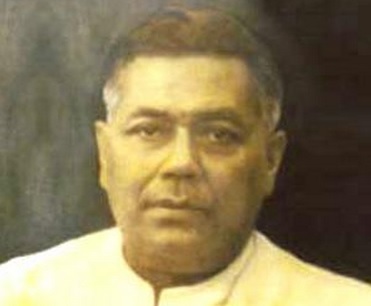
A prominent freedom fighter Gopinath Bordoloi was born on 6 June 1890. He was a lawyer and in 1917, started practising in Guwahati. He was a follower of Mahatma Gandhi and followed the path of non-violence.
In 1946-47 Muslim political leaders and most of them are allied to the Muslim League desired the inclusion of significantly Hindu controlled Assam. He worked relentlessly to prevent the inclusion of Hindu dominated Assam (into East Pakistan that encouraged a majority of Muslims). Gopinath Bordoloi along with other politician’s used a lot of diplomacy and political effects in order to finally preserve this regional integrity within the Union of India.
After independence, Gopinath Bordoloi worked actively in rehabilitating thousands of Hindus refugees who run away from East Pakistan. He worked through out to ensure public peace and harmony in Assam. These moves of him kept Assam safe from war over East Pakistan’s freedom. He served the position of Chief Minister of Assam. He was awarded the prestigious award, the Bharat Ratna in 1999.
Lata Mangeshkar
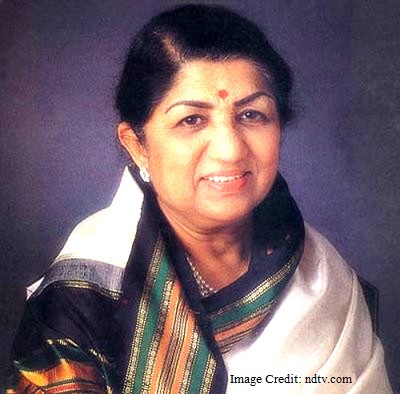
Lata Mangeshkar was born on 28 September 1929. She started her music classes (Hindustani classical music) from Ustad Amanat Ali Khan. She is one of the legendry Indian singer and an occasional music-composer. She is one of the most respected playback singers of India. Lata Mangeshkar started her career in 1942 which spanned over seven decades. She gave her voice to thousands of songs for Indian Cinema in Hindi & Marathi and also sang songs approx. 36 Regional Indian languages, foreign languages.
From 1950 she started working with top most music composers of Indian Cinema like- Anil Biswas, Naushad Ali, Shankar Jaikishan, Pandit Amaranth Husain, S. D. Barman, Lal Bhagat Ram and many more. She sang different raga-based songs. For charity purpose to needy people she started performing various stage concerts in India and abroad from 1970 –to till date. At the Royal Albert Hall (London) her first overseas concert held in 1974.
The Guinness Book of Records in 1974 listed Lata Mangeshkar as the most recorded artist in the history of cinema that she had recorded approx. 25,000 solo, chorus and duet songs in 20 Indian languages from 1948 to 1974.
Lata Mangeshkar has won several awards and honours for her fabulous contribution to our Music Industry such as Padma Vibhushan (1999), Padma Bhushan (1969), Maharashtra Bhushan Award (1997), Dada Saheb Phalke Award (1989), NTR National Award (1999), ANR National Award (2009) and finally the Bharat Ratna in 2001; after M. S. Subbulakshmi Lata ji is the 2nd vocalist to have ever been awarded, the Bharat Ratna.
Bismillah Khan
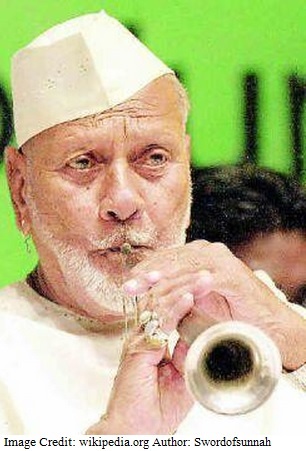
Ustad Bismillah Khan was born on 21 March 1916 in Dumraon, Bihar. His original name was Qamaruddin later he named as Bismillah Khan. His mentor was Ali Baksh ‘Vilayatu’, who was a well-known shehnai player. In a very short period of time Bismillah became a perfectionist of shehnai. He devoted his whole life to music. Despite achieving great fame all over the world he always remained attached with his roots.
In 1937, the concert at All India Music Conference in Kolkata brought shehnai into the limelight. He monopolized shehnai concert in the Post- Independence Era. He kept alive the classical music with his recitals. He had a great belief in Hindu-Muslim Unity and through his music he spread the message of brotherhood. He always said that only music could join all humans because music has no caste.
In 1947, on the eve of India’s Independence, Bismillah Khan mesmerized the citizens of India playing his shehnai. He also performed at the Red Fort, Delhi; since that year he had been playing his shehnai on 15th August every year right after the Prime Minister gave his speech.
He performed in many countries and had a large number of fan following. He started performing live in USA, Bangladesh, Iran, Japan, Iraq, Afghanistan, Canada, Europe, West Africa and Hong Kong.
Ustad Bismillah Khan was undoubtedly a gem of India. He has been awarded with all the top civilian awards namely Padma Bhushan, Padma Shri, and Padma Vibhushan; was awarded with the Bharat Ratna in 2001. On 21 August 2006 he died at Varanasi.
Bhimsen Joshi
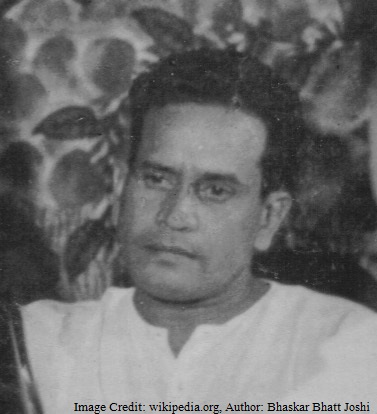
Bhimsen Joshi was born on 4 February 1922, Karnataka. He was a great lover of music at a very tender age and in search of Guru he left his home at the age of 11 years. He is the successor of Kirana stream a form of Hindustani classical music. He is famous for the ‘Khayal’ music. He is one of the legendary Hindustani vocalists. We can simply call him a living legend and someone who has really earned true fans all over the world. He perfected in Khayal interpretations and also sung many Bhajans (in Hindi & Marathi.)
His one of the most memorable performance that is still remembered by everyone was the national integration song ‘Mile Sur Mera Tumhara’, in his golden voice which appeals to the people of India to come together.
He has also been awarded with the Padma Shree in 1972, the Padma Bhushan in 1985 and the Sangeet Natak Akademi Award in 1976. He was awarded with the Bharat Ratna in 2009 for his contribution to enriching the Hindustani Classical Music.
C. N. R. Rao
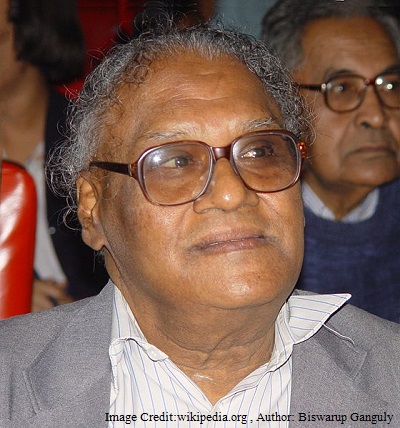
Chintamani Nagesa Ramachandran Rao (C.N.R. Rao) was born on 30 June 1934 in Bengaluru. In 1958 he completed Ph.D at the age of twenty-four in 2 years 9 months. He is an Indian chemist and researcher worked specially in solid-state and structural chemistry. He currently serves the position of the Head of the Scientific Advisory Council to the Prime Minister of India.
His major contribution is to the development of the field of chemistry. Rao was the first person to synthesize two-dimensional oxide materials – La2CuO4. Due to his work we can easily study the composition of controlled metal–insulator transitions. This study has a deep impact in application fields like high temperature superconductivity and resistance. He has made huge contributions in field of nanomaterial & hybrid materials.
He is working in the National Research Professor & Honorary President of Jawaharlal Nehru Centre for Advanced Scientific Research, Bangalore. He is also serving the position of the director of the International Centre for Materials Science (ICMS).
He is the author of fifteen hundred research papers in field of chemistry. On 4 February 2014 he was awarded with the Bharat Ratna for his research in structural chemistry and solid state of materials.
Sachin Tendulkar
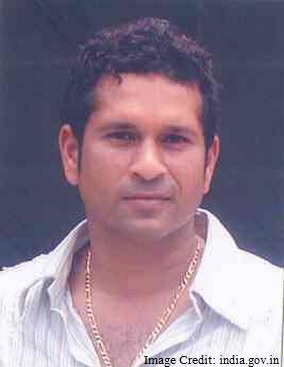
Sachin Tendulkar, the prodigious and most loved son of India was born on 24 April 1973 in Mumbai. Sachin is considered to be the best batsman ever and also one of the greatest cricketers to have played the game. Ever since at the age of 16 he made his Test debut in 1989 against Pakistan, Sachin continued to play for India with the same enthusiasm and dedication till his retirement from the game on 16 November 2013.
In his long and successful cricketing career Sachin has broken almost all batting records with his brilliant batting performances; he holds several near unbreakable records such as: Most number of Test runs (15, 921), most number of centuries (100), most number of Tests played (200), most number of Test and One Day centuries (51 and 49 respectively) etc.
Tendulkar made India proud through his single minded devotion to the game and gave a sense of hope to millions of Indians; the whole of India celebrated his successes as their own and considered him as one of the greatest Indians ever.
Sachin have received every possible cricketing award all over the world and in India also he was bestowed with all the top honours of the game; he was also awarded with Padma Shri and Padma Vibhushan. And in 2013, the Government changed rules to award him the highest civilian award of the country, the Bharat Ratna. Thus, Sachin became the first ever sportsperson to receive this award; he is also the youngest to get the Bharat Ratna.
Madan Mohan Malaviya
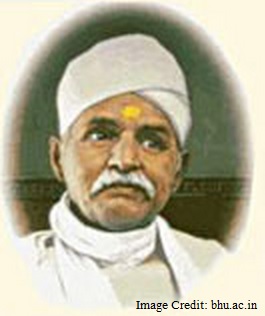
This great nationalist, independent movement leader and journalist was born on 25 December 1861 in Allahabad. Madan Mohan Malaviya was associated with the Indian National Congress since its very inception and attended its second Session in Calcutta in 1886. Early in his life he worked as editor of two important dailies; in 1887 of ‘Hindosthan’ and in 1889 of ‘The Indian Opinion’.
Malaviya ji also completed his LLB from Allahabad University and practiced as a successful lawyer. At the same time he was very active in the freedom struggle; he became president of Indian National Congress in 1909 and 1918. He was a moderate leader within the Congress; Gandhi ji gave him the title of “Mahamana”.
He remained very active in various movements against the British and as a lawyer fought for the release of the freedom fighters that were convicted after the Chauri Chaura case and got almost all of them freed.
But perhaps the most important contribution of Malaviya ji was his effort in founding the Banaras Hindu University with the help of Annie Besant in 1916; the BHU is today one of best Universities in India. Madan Mohan Malaviya remained its Chancellor till 1939.
On 12 November 1946, this great educationist and freedom movement leader passed away. He was awarded with the Bharat Ratna posthumously in the year 2014.
Atal Bihari Vajpayee
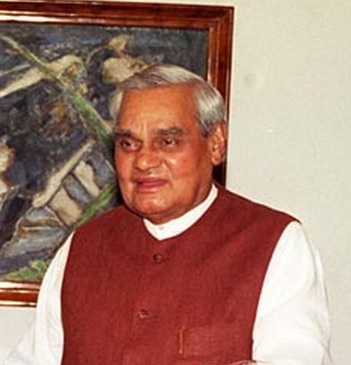
Atal Bihari Vajpayee was born on 25 December 1924 in Gwalior. His was one of the longest political careers in India spanning almost six decades. He was considered as one of the great statesmen of the country; loved by the masses his oratory skills are exceptional.
Vajpayee ji started his public life when he joined the RSS in 1939 and remained committed to its ideology till date. He became the prominent member and President of the erstwhile Jana Sangha. During the Emergency, he was one of the prominent leaders of widespread protest against PM Indira Gandhi and got arrested. When the Jana Government took charge after the Emergency, Vajpayee was chosen as the Minister of External Affairs.
In 1980 he along with other Jana Sangha members founded the Bharatiya Janata Party (BJP). When the first BJP government came into power at the Centre, he became the Prime Minister of India, first for 13 days in 1996, then, for 13 months in 1998-99 and again for 5 years in 1999.
Under his leadership India conducted its second nuclear test in May 1998 after 24 years of its first test. During his tenure he initiated several nation building projects such as National Highway Development Project, Pradhanmantri Gram Sadak Yojana etc.
Throughout his long political life, Atal Bihari Vajpayee got the love and affection of common people and even his political opponents were his admirers. In the year 2014, he was awarded with the Bharat Ratna for his distinguished public life. He died on 16th of August in 2018 due to the respiratory disease.
Bhupen Hazarika
Bhupen Hazarika (8th September 1926 – 5th November 2011) was a prominent playback singer, lyricist, film maker, poet from the northeastern state of Assam. He wrote and sang songs mainly in Assamese language. The songs gained so much popularity that they were translated in Bengali and Hindi.
The singing talent of Hazarika was largely influenced by his mother who introduced him to Assamese music in his childhood. He made his first public appearance at the age of 10 at Tezpur, by singing “Borgeet”, a traditional devotional song of Assam taught by his mother.
It was in Tezpur, that his talent was discovered by two icons of Assamese culture – Jyoti Prasad Agarwala and Bishnu Prasad Rabha. Former was a noted lyricist while latter was a revolutionary poet. Close association with the duo, opened new opportunities for Hazarika and he started singing in Hindi cinema by the age of 12 and wrote his own song at 13.
During his complete career, Hazarika has made award winning films and provided music to Assamese, Bengali or even Bangladeshi films. He also was a member of Legislative Assembly from Nauboicha constituency.
Bhupen Hazarika died of multiple organ failure on 5th November 2011, and posthumously was conferred with Bharat Ratna on 8th August 2019 for his outstanding contribution to Indian film and music industry.
Nanaji Deshmukh
Nanaji Deshmukh’s (11th October 1916 – 27th February 2010) full name was Chandrikadas Amritrao Deshmukh. He was a social activist related to the fields of education, health and rural self reliance. He also was a member of Bhartiya Jan Sangh and a Member of Parliament from Rajya Sabha.
Nanaji Deshmukh was born in Hingoli district in eastern Maharashtra. He sold vegetables to supplement his educational expenses as a child. Due to his hard work and perseverance he managed to get into Birla College and moved on to join RSS (Rashtriya Swayamsevak Sangh).
In RSS, he was active mainly in the state of Uttar Pradesh, where he raised the ranks to become Saha Prant Pracharak of complete state. Inspired by Bal Gangadhar Tilak since his childhood, Deshmukh had a keen interest in social service. He established nearly 250 sangh sakhas in Uttar Pradesh within two years.
Due to his impeccable record on social service in the field of health and education along with making villages economy self reliant; Government of India conferred him with one of India’s highest civilian honour, Bharat Ratna on 8th August 2019.
Pranab Mukherjee
Pranab Mukherjee was born on 11th of December, 1935 in Mirati village in Birbhum district of Bengal Presidency in British India. He is the son of Kamada Kinkar Mukherjee, who had been a member of All India Congress Committee and West Bengal Legislative Council (1952-1964). Kamada Mukherjee was also active during Indian Independence Movement.
After completing M.A. from University of Calcutta, Pranab Mukherjee worked as an upper division clerk in the office of Accountant General in Calcutta. Moving on in 1963 he became a lecturer in Vidyanagar College in Calcutta and also worked as a journalist with Desher Dak (Call of Motherland).
Mukherjee’s nearly five decades long political career began in 1969, when he successfully managed the by-election campaign of V.K. Krishna Menon from Midnapore in West Bengal. He gained confidence of Smt. Indira Gandhi and became a member of Rajya Sabha in July 1969.
Since then Pranab Mukherjee has held several prominent positions as Minister of External Affairs, Minister if Defence and Deputy Chairman of Planning Commission among others. He was in office as the 13th President of India from 25th July 2012 to 25th July 2017.
For his exceptional service to the nation during his five decades of political career, government of India conferred Pranab Mukherjee with Bharat Ratna on 8th August 2019.

